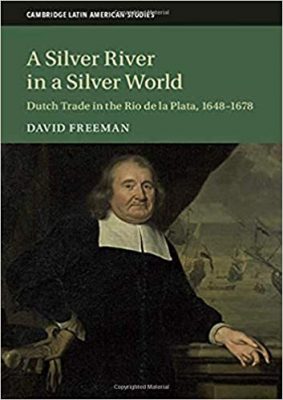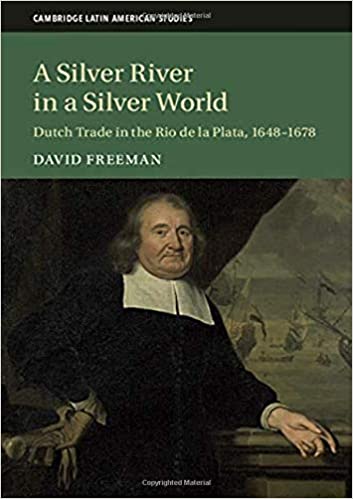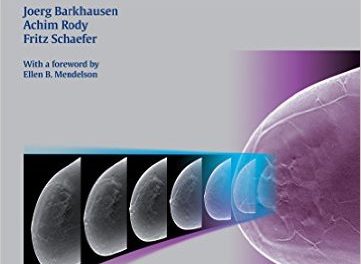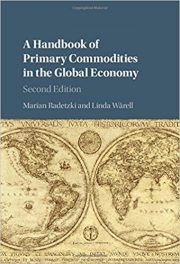 Author: David Freeman
Author: David Freeman
Publisher: Cambridge University Press – 222 pages
Book Review by: Sonu Chandiram
How much total silver is mined annually the world over? The amount in 2019, according to the United States Geological Survey (USGS), was 23,650 metric tons (down about 12 percent from 26,900 in 2018).
A ton of silver, essentially the same as a metric tonne, is equal to 32,150.75 troy ounces. As of today, November 12, 2020, one troy ounce of silver is priced at $24.41, according to Monex, a well-known precious metals dealer in the United States.
The price of silver, as with other precious metals, fluctuates daily. If you do the math, you will note that more than 760 million troy ounces of silver were mined around the world in 2019, worth over $18.5 billion. At this point, most readers may be wondering: what is the top silver-mining country in the world?
Among four friends that I asked this question, only one knew the correct answer: Mexico. He is a coin collector. He also pointed out to me that the price of silver, along with silver coins, has been going up lately. Compared with $24.41 today, 50 years ago in 1970, one troy ounce of silver was just around $4.00. Today, you see a more than a six-fold increase, averaging an increase of 12.2 percent a year.
If you look at the title of this book, you will probably guess that the top silver-mining countries are likely located in South America and North America. According to Investopedia, Mexico as the world’s No.1 silver-mining and producing country. It had an output of 6,300 tons in 2019, amounting to more than a quarter of the total produced by the world’s top 10 countries in this industry. The other nine were: Peru, China, Russia, Poland, Australia, Chile, Bolivia, Argentina, and the United States (see chart).
Silver, along with other precious metals, most notably gold, has been mined, refined, and manufactured in bricks, slabs, and coins for centuries. In the past, it was also traded not just for cash, but also in exchange for other scarce goods.
This book focuses on the trading of silver over a 30-year period within the seventeenth century. The trade and commerce was between the Dutch and South Americans living around the Rio de la Plata. These people were the inhabitants of what are today known as Argentina, Bolivia, Brazil, Chile, Paraguay, Uruguay, and other surrounding areas. Among the aspects of the silver trade discussed in this book are presented in its Table of Contents:
Introduction
- The Silver World
- The Silver River
- Golden Connections: Governors, Networks, and Contracts
- Dutch Ships and Dutch Men on the Rio de la Plata
- Conflicting Ownership
- Silver Tongue
- Silver Politics on the Estuary
- The Silver River Runs Dry
If you remember your history of Spain, this was a country that explored and colonized many lands around the world, particularly in South America. (Is it any surprise that many residents in that continent speak Spanish?).
Between the late fifteenth century and the early nineteenth century, Spain controlled very large tracts of land and numerous countries around the world – in Africa, Asia, the Caribbean, North America, Oceania, and South America.
In this book, the author, Professor David Freeman, relates to readers the activities and work of a Dutch trader named Albert Janssen:
Janssen had arrived from Amsterdam, in the Netherlands. Here are some highlights of his trading and circumstances
- On April 03, 1660, he anchored his ship – the Goude Leeuw – on the banks of the Rio de la Plata in Buenos Aires, Argentina. This river
- His other ship – the Vergulde Valk – had been anchored for several months and would shortly depart for its return journey.
- At age thirty, Janssen had made a small fortune importing hardware, textiles, and other merchandise from Amsterdam into Buenos Aires.
- He was also exporting hides, and especially silver from Buenos Aires to Amsterdam.
- Buenos Aires was not particularly a large market for Dutch-made goods.
- But Potosi – with its commercial economy, thriving population, and especially silver mines – was just two months overland by pack mule and cart.
He explains: “The Spanish trading route to Potosi went the other way, via Lima (Peru) to the west coast of South America and from there north to the Caribbean and beyond to Seville or Cadiz in Spain. Buenos Aires offered merchants a more direct route, but there was the problem of accessing it, as the port was officially closed to unauthorized shipping.”
From 1657 to 1662, Janssen, who told people that he was from Amsterdam or Antwerp depending on who was asking, made his home near the Rio de la Plata. He made connections that eased his business and movements, and enhanced his fortunes.
Professor Freeman provides a perspective of the contents of this book by writing: “Much of the work of the merchants, particularly the Dutch trading in Spanish America, focuses on illegality, and labels the practice ‘contraband’ and ‘illicit’. For the Rio de la Plata in the seventeenth century, the dominant argument established that government and fiscal officers of Buenos Aires used their positions to enrich themselves by allowing Dutch ships to trade illegally at this seaport, bypassing the official Spanish route and therefore depriving the crown of its revenues.”
“Historians understood this practice as bureaucratic corruption in its purest form, resulting from the inadequate policies enforced by a distant monarchy regarded both as politically absolute end economically inefficient.”
Author: David Freeman is Associate Professor of History at the University of Missouri in Kansas City.







